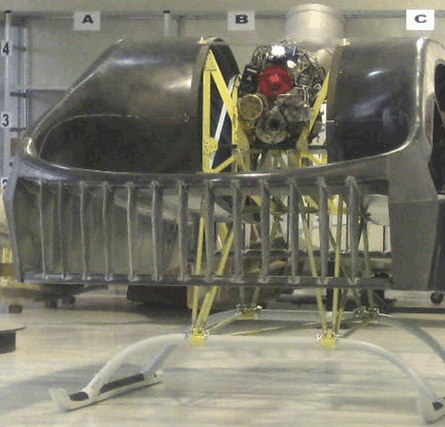Urban Aeronautics has started windtunnel testing of a 250kt (465km/h)-capable cargo variant of its new 100kt top-speed Mule ducted-fan unmanned air vehicle.
The company says that the decision to carry out the 250kt variant's early development work is the result of discussions with potential customers. But the high-speed version lacks some of the advantages of the 100kt model, which could be used for medical evacuation missions and has the advantages of relative mechanical simplicity and easier carriage by Sikorsky CH-53 and AgustaWestland AW101 helicopters.
Urban has not decided if it will start full-scale development of the 250kt variant. All its efforts are now focused on the basic Mule, the prototype for which should start hover tests in April. In December the prototype had the Mule's single Turbomeca Arriel 1D1 engine fitted to it and the flight-control system and its sensors are being tested on Urban's Panda vehicle. The Panda is a flying scale-model testbed that has similar aerodynamic characteristics to Mule.
 |
|---|
Urban Aeronautics |
Urban president Rafi Yoeli told Flight International that the Mule's biggest advantage over traditional helicopters are its internal rotors: "The lack of exposed rotors eliminates the danger of rotor strikes and risk to ground personnel while the vehicle is on its autonomous approach and departure."
With a payload of 318kg (700lb) per single 31km (57nm) radius sortie, each Mule will be capable of delivering about 3,180kg over 24h, including the ferrying on return trips of casualties where medevac flights are needed. Mule's maximum operating altitude is 12,000ft (3,660m).
Source: Flight International























